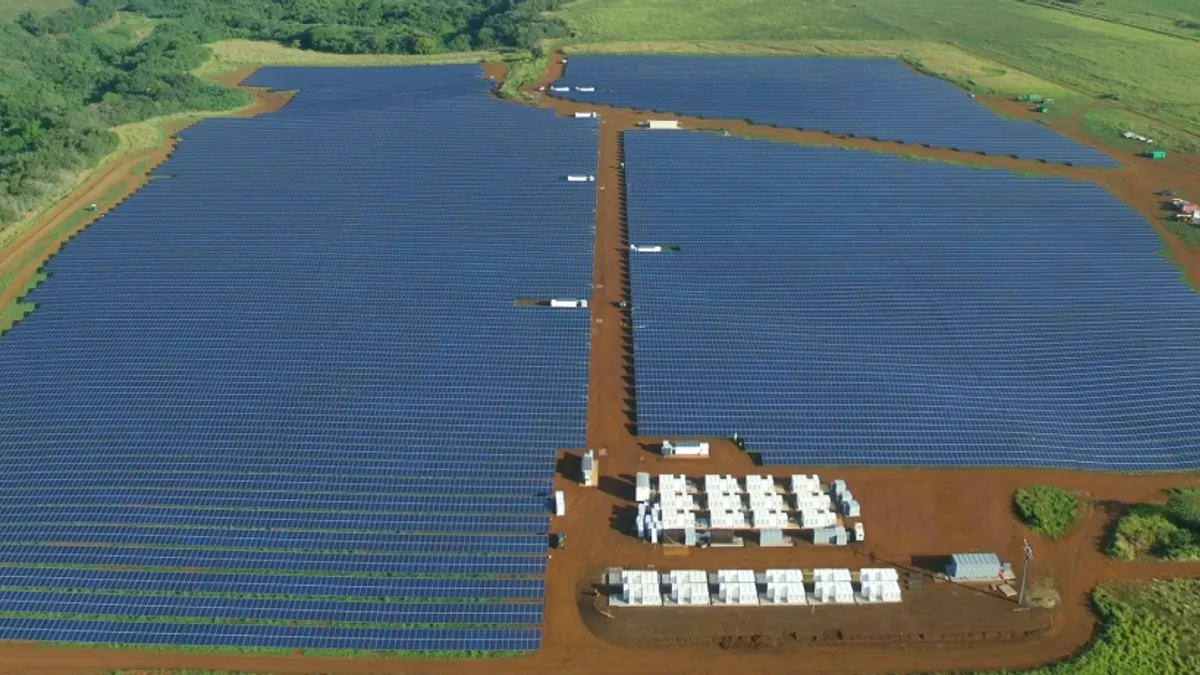Dive Brief:
- Renewable energy developer Intersect Power has floated plans to construct 495 MW of energy storage next to 495 MW of solar in Borden County, Texas, according to the January generation interconnection status report from the Electric Reliability Council of Texas (ERCOT).
- If completed, the project would be the world's largest battery system when it comes online in 2021, Bloomberg reported, based on an ERCOT chart listing storage and solar projects expected to be completed in the next four years. The project would increase the state's installed solar capacity to over 6.8 GW and the energy storage capacity to 584 MW.
- The solar-plus-storage pairing in the middle of the Permian Basin could help meet energy needs for oil-field operations, but Intersect's CEO told Utility Dive that many filings in interconnection queues "never reach operations."
Dive Insight:
As technology costs drop, battery storage is increasingly getting paired to all sorts of generation these days, including gas-fired and solar of all sizes.
Last week, NextEra Energy Resources and Portland General Electric (PGE) announced they would pair 30 MW of battery storage with 300 MW of wind generation and 50 MW of solar — the largest wind-solar-storage hybrid in the United States.
The utility said it expects similar projects will follow. PGE is one of many trying to increase reliability of renewable assets with energy storage. But in Texas, some utilities have a harder time accessing the benefits of pairing storage with renewables.
State regulators have asked for "legislative clarity" on the ownership of energy storage devices. The Public Utility Commission of Texas (PUCT) in January deferred an anticipated decision about whether transmission and distribution (T&D) utilities operating within ERCOT can own storage assets under the state's Public Utility Regulatory Act (PURA).
While Texas law classifies energy storage as generation, the technology also has load capabilities. T&D utilities have argued through the PUCT proceeding that they can own energy storage facilities for use on their distribution systems because they would not be intended as generation, therefore not impacting wholesale power prices.
The state legislature's session runs until May 27, but if it does not act, the PUCT would revisit the issue, according to Chairman DeAnn Walker. ERCOT did not comment on storage ownership for T&D utilities in the PUCT's storage ownership docket.
While utilities, such as Oncor Electric, say that statutory grid reliability provisions made under PURA allow certain storage applications, generators like Vistra Energy say the declining costs of energy storage signal utility support is not needed to develop and deploy "nontraditional technologies."
Currently, the largest energy storage project in Texas is a 10 MW, 42 MWh lithium-ion battery completed by Vistra at a 180 MW solar plant in Upton County.
Like Borden, Upton is in the middle of the Permian Basin. The grid operator has identified a need for more power capacity to drive the area's oil and gas drilling operations. Wind resources are also being developed in West Texas.
The Borden projects, labeled Juno Storage and Juno Solar in ERCOT's generation interconnection status report, are expected to be completed by May 15, 2021. The developer signed an interconnection agreement for both assets at the end of December.
Intersect Power declined to comment on the Juno assets.
"We make a lot of filings and hold lots of land positions for many reasons across our portfolio, the bulk of them never reach operations. This is the nature of our business," Sheldon Kimber, CEO and founder of the company, told Utility Dive via e-mail.
ERCOT also lists Intersect Power as the developer for two additional solar projects that have requested full solar interconnection studies in West Texas: Aragorn Solar, 186.3 MW, expected to be completed by the end of July, 2020, and IP Titan, 272 MW, expected to be completed by the end of June, 2021.














